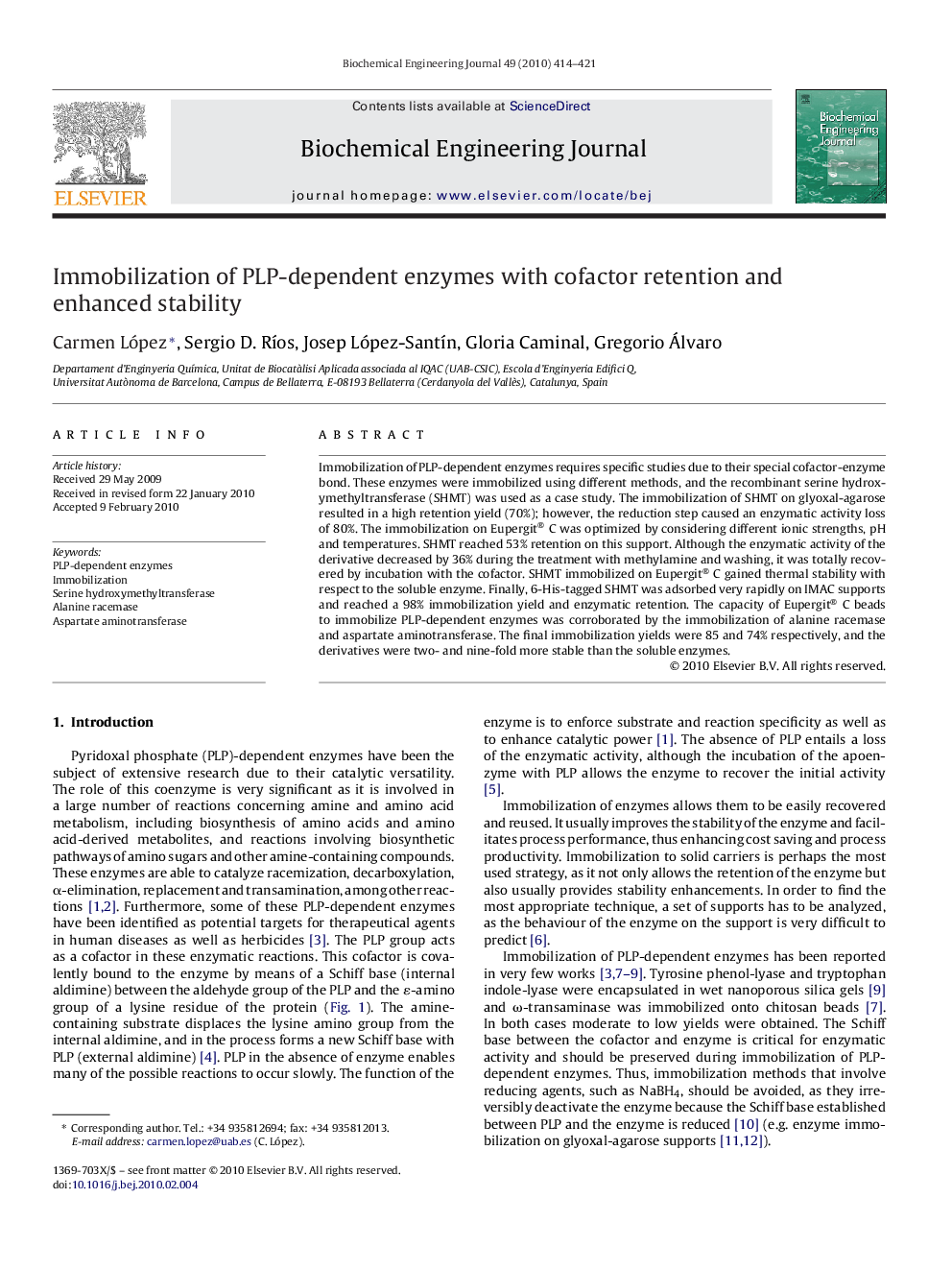| Article ID | Journal | Published Year | Pages | File Type |
|---|---|---|---|---|
| 3987 | Biochemical Engineering Journal | 2010 | 8 Pages |
Immobilization of PLP-dependent enzymes requires specific studies due to their special cofactor-enzyme bond. These enzymes were immobilized using different methods, and the recombinant serine hydroxymethyltransferase (SHMT) was used as a case study. The immobilization of SHMT on glyoxal-agarose resulted in a high retention yield (70%); however, the reduction step caused an enzymatic activity loss of 80%. The immobilization on Eupergit® C was optimized by considering different ionic strengths, pH and temperatures. SHMT reached 53% retention on this support. Although the enzymatic activity of the derivative decreased by 36% during the treatment with methylamine and washing, it was totally recovered by incubation with the cofactor. SHMT immobilized on Eupergit® C gained thermal stability with respect to the soluble enzyme. Finally, 6-His-tagged SHMT was adsorbed very rapidly on IMAC supports and reached a 98% immobilization yield and enzymatic retention. The capacity of Eupergit® C beads to immobilize PLP-dependent enzymes was corroborated by the immobilization of alanine racemase and aspartate aminotransferase. The final immobilization yields were 85 and 74% respectively, and the derivatives were two- and nine-fold more stable than the soluble enzymes.
